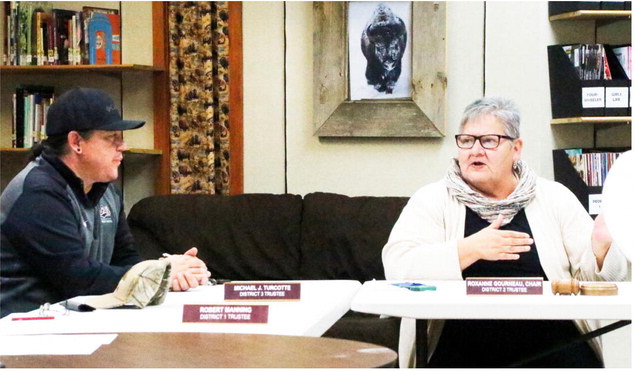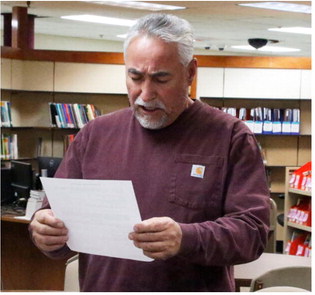Pot Smell, Safety Concerns Ignite Disputes Over Public Smoking
Carl Sack is no fan of marijuana. He tried smoking once in high school and hasn’t touched it since. And he doesn’t just dislike the clouds of pot smoke he encounters around Duluth, Minn., — he hates them.
“I can’t stand to be around the stuff,” he said.
But he’s still adamantly opposed to local efforts to ban the public consumption of marijuana, which became legal for recreational use on Aug. 1. Sack is among several residents asking the Duluth City Council to reject a proposed ban on marijuana consumption in city parks.
“At a time when we’re finally getting rid of the racist war on drugs at the state level, the city of Duluth shouldn’t be the one to take up the mantle of this shameful and failed public policy,” he told the City Council last month.
Many Minnesotans were surprised to learn the state’s legalization law didn’t outright ban public consumption. While existing tobacco rules already prohibit indoor smoking in most places, state law allows smoking in most public outdoor spaces — unless specifically banned by the local government.
“Our community had some concerns. … Especially when we found out that this was the ball being passed to us,” said Arik Forsman, a Duluth City Council member who introduced the ban. Officials in Alexandria and St. Paul are considering similar ordinances.
The debate over public consumption has grown since 23 states and the District of Columbia have legalized adult-use marijuana but with widely varying regulations.
Most states that have legalized marijuana forbid public consumption, according to the National Organization for the Reform of Marijuana Laws, or NORML, a marijuana advocacy group. In three state — Connecticut, Minnesota and Rhode Island — consumption rules are largely left to local officials. But in New York, marijuana is treated similarly to tobacco, meaning it’s legal to light up in most places unless specifically banned.
Now, some of the states that ban public consumption, including Nevada and New Mexico, are beginning to sanction marijuana consumption lounges. Essentially bars for pot, those establishments offer consumers a place to legally smoke outside their own homes.
“It seems different in every state how they’re approaching it,” said Aaron Smith, chief executive officer of the National Cannabis Industry Association. “And I think it is important because obviously if something is going to be legal, there needs to be a way to legally consume that product.”
Smith, whose organization represents hundreds of marijuana growers and sellers across the country, said some local control makes sense so long as marijuana isn’t treated differently than alcohol and tobacco.
“There’s a lot of places where you can’t use those products, but there are places where you can,” he said. “And if you can smoke a cigarette somewhere, you should be able to vape cannabis or smoke a joint.”
Lawmakers frequently cite public safety as a reason for regulating where people can consume marijuana. Another major driver is a general distaste for the pungent odor of pot smoke, which some officials believe the public, particularly children, should not be subjected to.
In Duluth, a community of about 86,000 people, council members are expected to vote on the marijuana ban in parks on Aug. 14. If enacted, the ban on smoking in parks would allow police to charge violators with a petty misdemeanor and a fine of up to $300.
“To me this is the knee-jerk reaction to legalization that wants to preserve the status quo of prohibition,” Sack said in an interview with Stateline.
Striking a balance
In New York, state Sen. George Borrello says lax cannabis laws have led to a “Wild West” environment since the state’s 2021 legalization of marijuana.
“New York, as always, hurdles itself into the far reaches when it comes to doing anything like this,” said Borrello, a Republican from upstate’s Jamestown, in an interview with Stateline. “They have to prove that they’re more progressive than anybody else. And that’s been a disaster for New Yorkers, quite frankly.”
Aside from the proliferation of illegal pot shops, Borrello said he receives constant complaints from constituents about rampant use of marijuana in public. He noted that even New York City Mayor Eric Adams, a Democrat, has publicly acknowledged the pervasive marijuana scent across the city.
“This is really not a Republican or Democrat issue,” Borrello said. “This is really a quality-of-life issue.”
In July, he introduced legislation that would ban public consumption of marijuana across the state and enact a $125 fine for violators. The law would give local governments the option of passing their own rules allowing public consumption within their jurisdictions.
“And I think many will think twice about that, to be quite honest,” Borrello said. “Because I’m sure like me, they’re getting a lot of complaints.”
But some advocates fear such bans could disproportionately harm people of color and those with lower incomes — a major rationale for decriminalizing marijuana in the first place. While white and Black Americans generally consume marijuana at similar rates, African Americans are nearly four times as likely to be arrested for possession, according to the American Civil Liberties Union.
Morgan Fox, the political director for NORML, said marijuana arrests have dropped precipitously in states following legalization.
“But the few citations or criminal code violations that are still left on the books in these states continue to be applied and enforced in a racially and economically discriminatory manner,” he said.
In the four years following D.C.’s 2015 legalization of marijuana, 84 percent of people arrested for public consumption were Black, according to a Washington Post analysis, though African Americans account for only about 45 percent of the population.
Fox acknowledged the merit of imposing some local restrictions on public consumption. But, he said, if people have no legal location to consume, they will simply do so in illegal places.
Just like with tobacco, private landlords can ban marijuana smoking. And because marijuana remains illegal at the federal level, tenants in federally subsidized housing risk eviction if caught consuming it. Fox said policymakers should strike a balance between the rights of consumers and non-consumers of marijuana when it comes to public use. That’s why NORML favors marijuana consumption lounges, public spaces specifically designed for the use of pot.
“If you compare it to alcohol, there are plenty of places where you can consume alcohol in a social setting outside of a private residence,” he said, “and that provides an outlet for that, so it greatly cuts down on the amount of alcohol consumption in public spaces.”
Consumption lounges
To lounge owner Christa Tyler’s mind, legalization and public consumption go hand in hand.
“The whole point of making it legal is so that people can enjoy it,” she said. “There’s no point in being able to go to the bar and get your beer and not being able to go to the consumption lounge and get a joint.”
But things aren’t that simple at her 420 Tea Time, a dispensary and consumption lounge in White Rock, about 40 miles outside of Santa Fe, New Mexico. The shop sells a wide range of marijuana-infused products, including gummies, honey and lotions.
Her license to operate a marijuana consumption business comes with many regulatory strings.
County regulations allow consumption of edibles but ban customers from smoking inside the marijuana lounge. So, any pre-rolled joints or loose marijuana flower she sells in the store must be smoked elsewhere.
It’s created confusion among customers, she said. She thinks most public officials regulating legal marijuana have little to no real-world experience with it.
“Honestly, they don’t know what they’re talking about, but they’re making all these rules for people who do know what they’re talking about,” she said. “So, it gets very, very hard.”
The New Mexico legislature legalized marijuana in 2021 and the first legal sales began in 2022. As is the case in other states, many residents thought the law made it legal to consume pot anywhere in the state — far from the current regulatory framework, which involves layers of state and local oversight. Cities in New Mexico must opt in to allow public consumption areas. Then, those businesses must comply with local zoning rules, plus the state’s cannabis regulations.
“I did think it was really important to have local control,” said Democratic state Rep. Andrea Romero, one of the sponsors of legalization legislation.
“I want to see a really solid future for this industry,” she said. “It’s a huge experiment for many of us, but when you’ve seen the repercussions of some of the other harms that were caused by the war on drugs, for me this is a way better option.”
Robert Sachs, division counsel for the state’s Cannabis Control Division, acknowledged the complexity of the issue.
“I feel like there’s a lot of confusion,” he said.
That’s why New Mexico recently launched a public messaging campaign regarding the “Yes and Knows” of the state’s marijuana rules.
So far, consumption lounges have not taken off in the state. While more than 1,000 dispensaries have been licensed, Sachs said the state has only issued 19 licenses for its public consumption areas.
It’s a similar story in Nevada. While marijuana has been legal since 2017, the law only allowed it to be consumed in private. Legislation in 2021 allowed the state to start approving its first licenses for public consumption lounges this June.
“It’s been frustrating from that standpoint, because it’s been legal for close to six years now,” said Brett Scolari, a lobbyist who represents several marijuana businesses in the state.
In Nevada, tourism is king. But the state’s biggest draw, the Las Vegas Strip, remains off-limits to marijuana businesses, which are not allowed to operate within 1,500 feet of casinos.
“That probably ends up being the key to all this: When the resort corridor can actually allow cannabis on property, then I think you’ll see a big shift,” Scolari said.
He said tourist hot spots like the Strip already are rife with pot smoke. Law enforcement doesn’t have the time to bust every visitor smoking a joint, he said. And locals and visitors alike feel like “we can do it wherever we want” because marijuana is legal.
He expects those attitudes will continue to push Nevada lawmakers and regulators to become more permissive with marijuana in the coming years.
“But it’s going to be baby steps,” he said.
( This story was produced by Stateline which is part of States Newsroom, a nonprofit news network, including the Daily Montanan, supported by grants and a coalition of donors as a 501c(3) public charity.)

